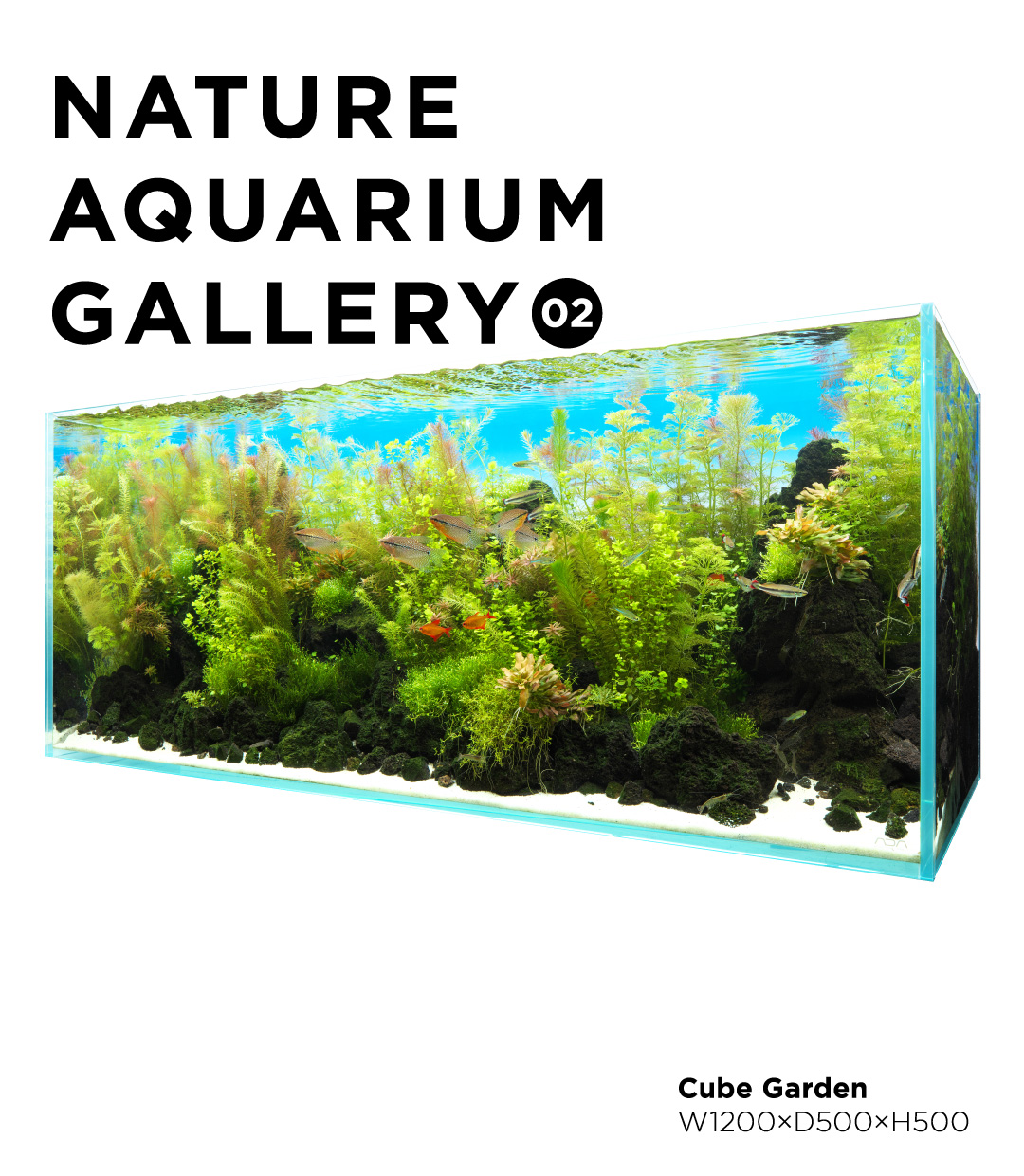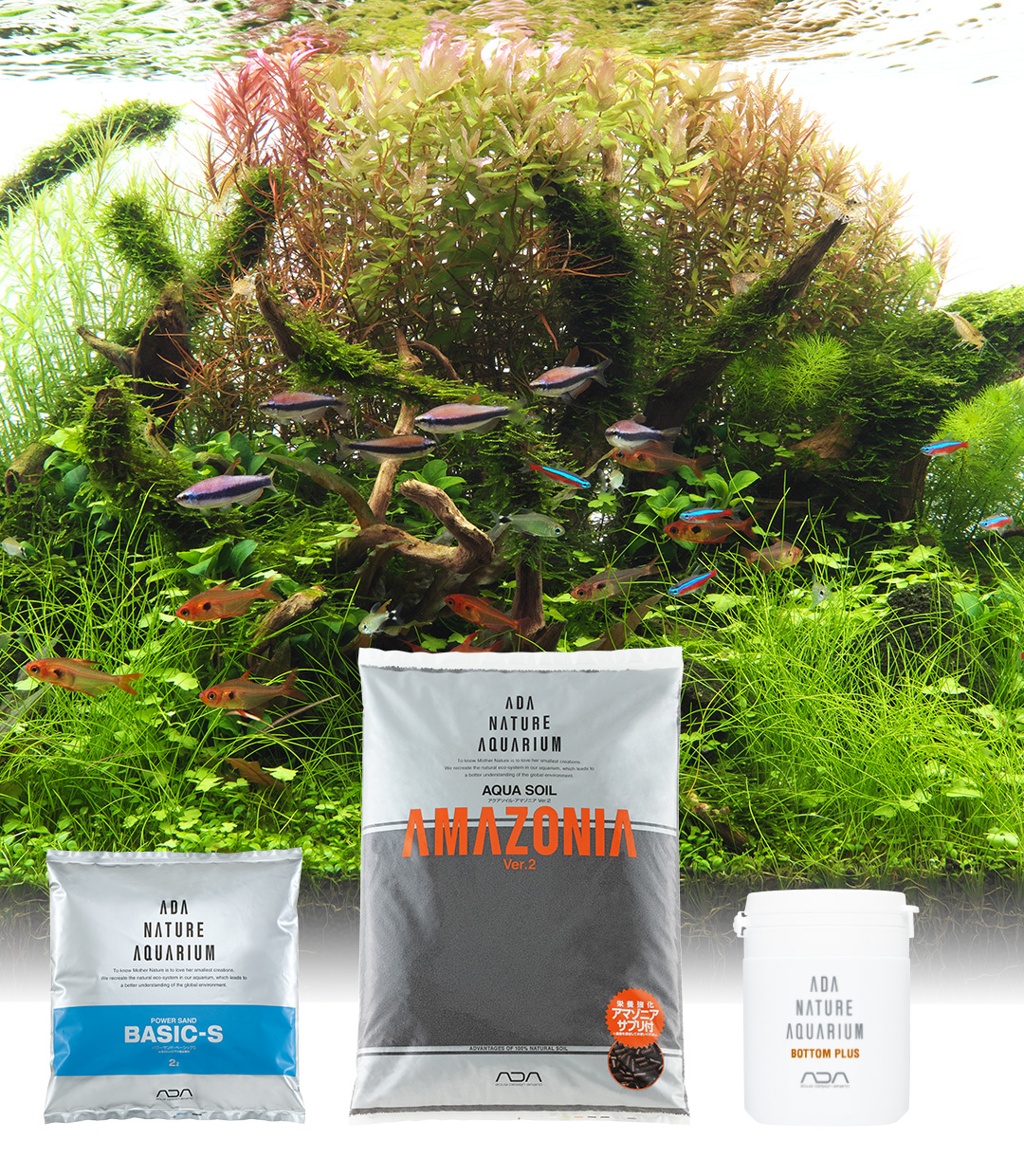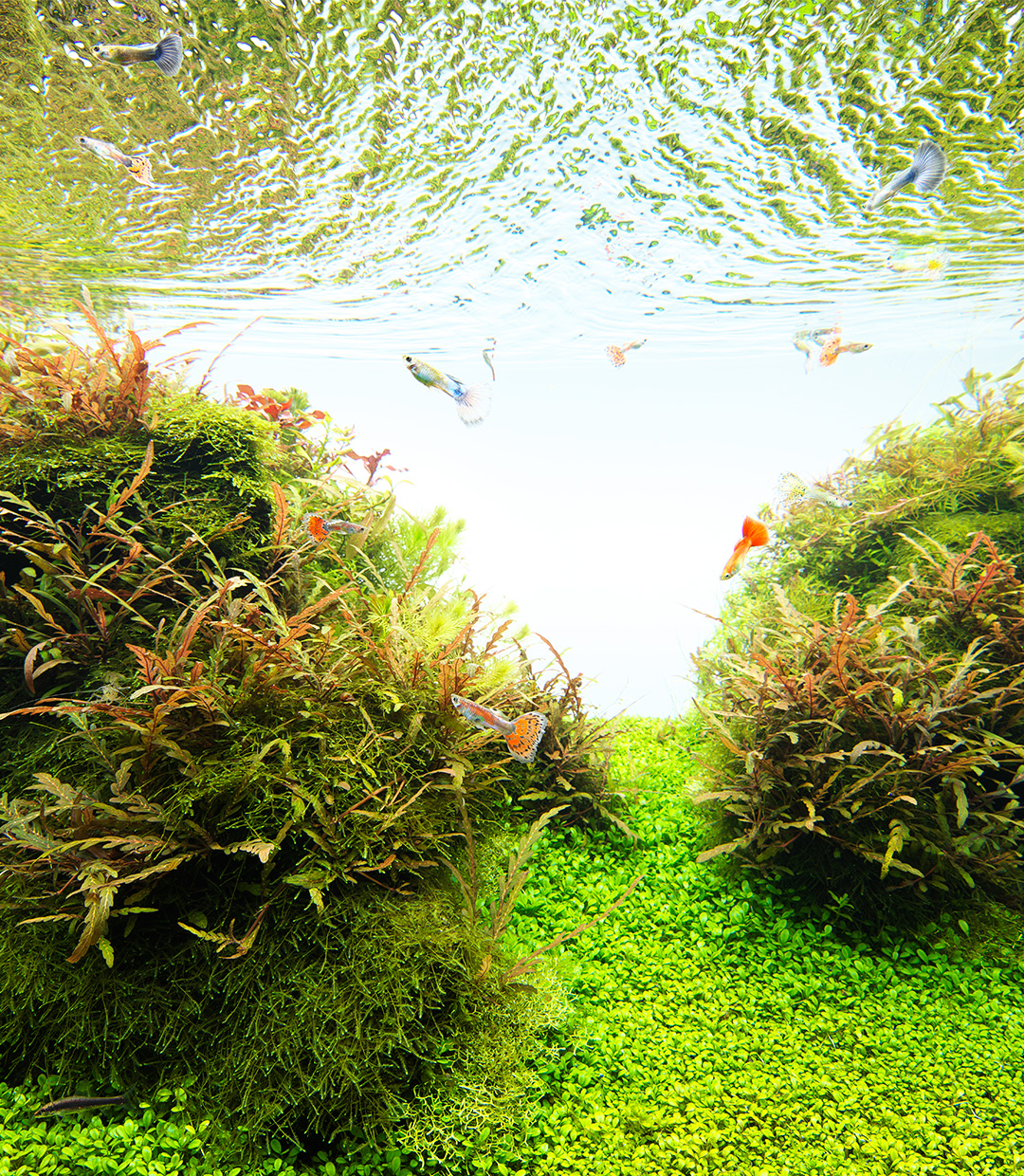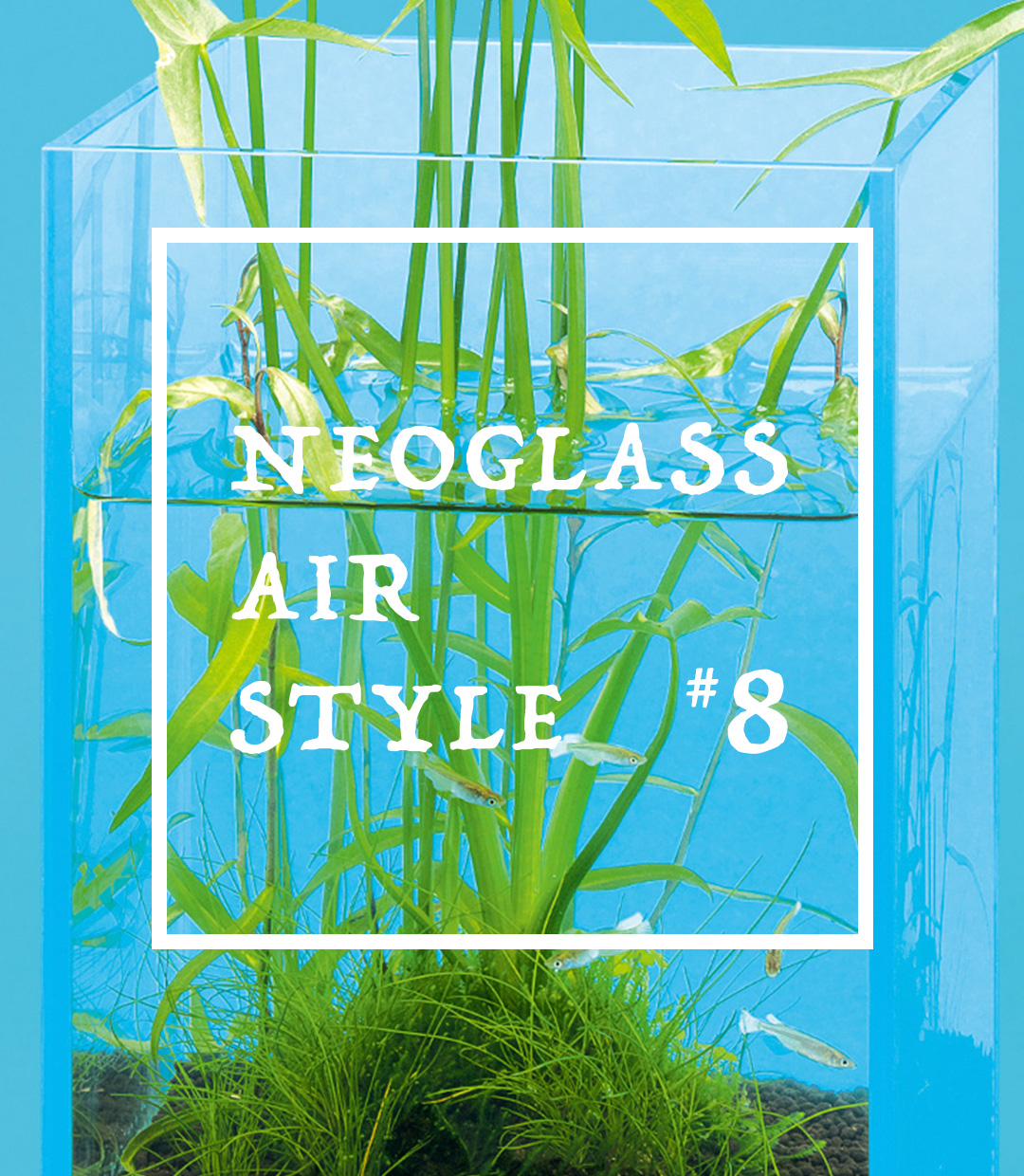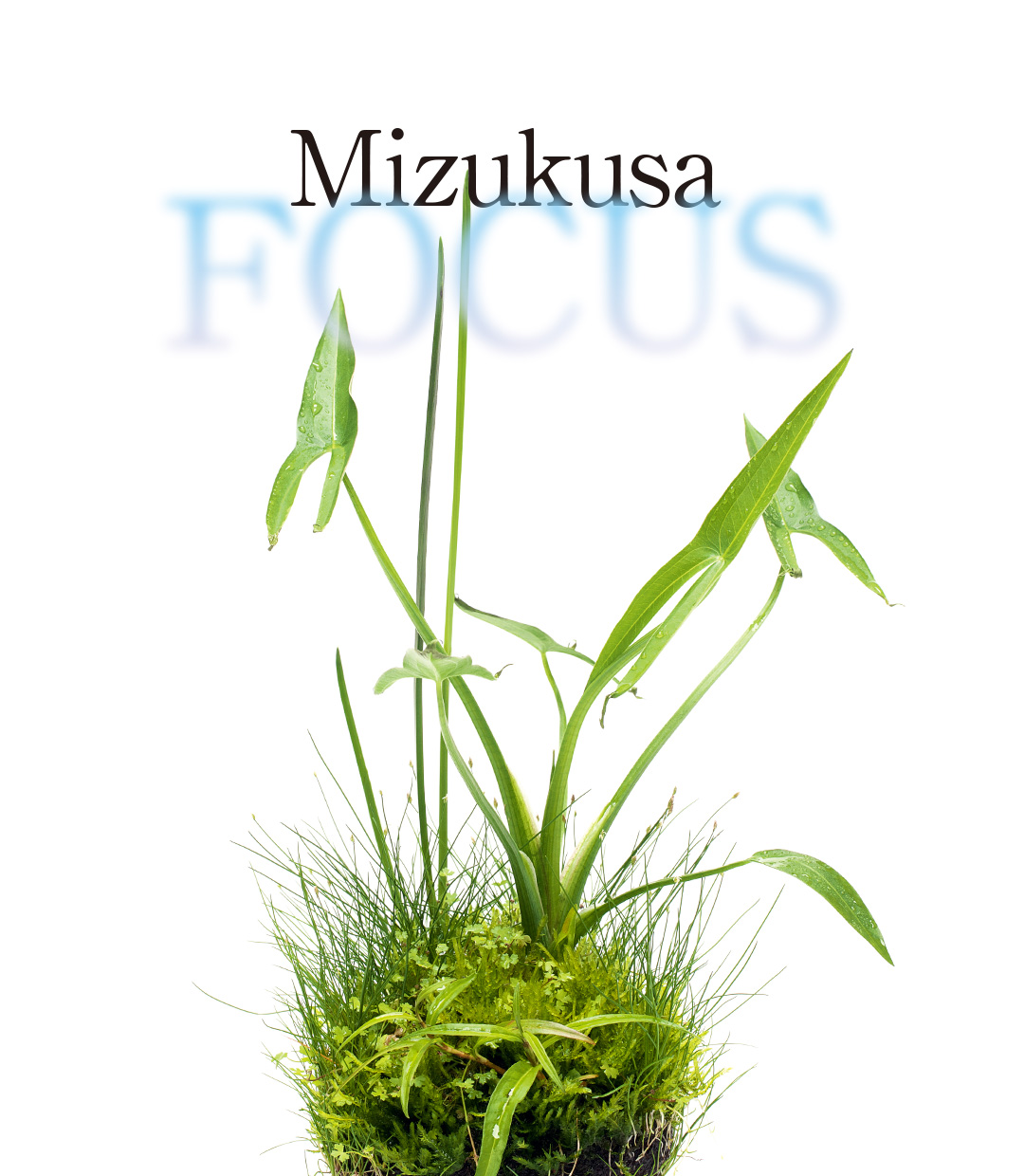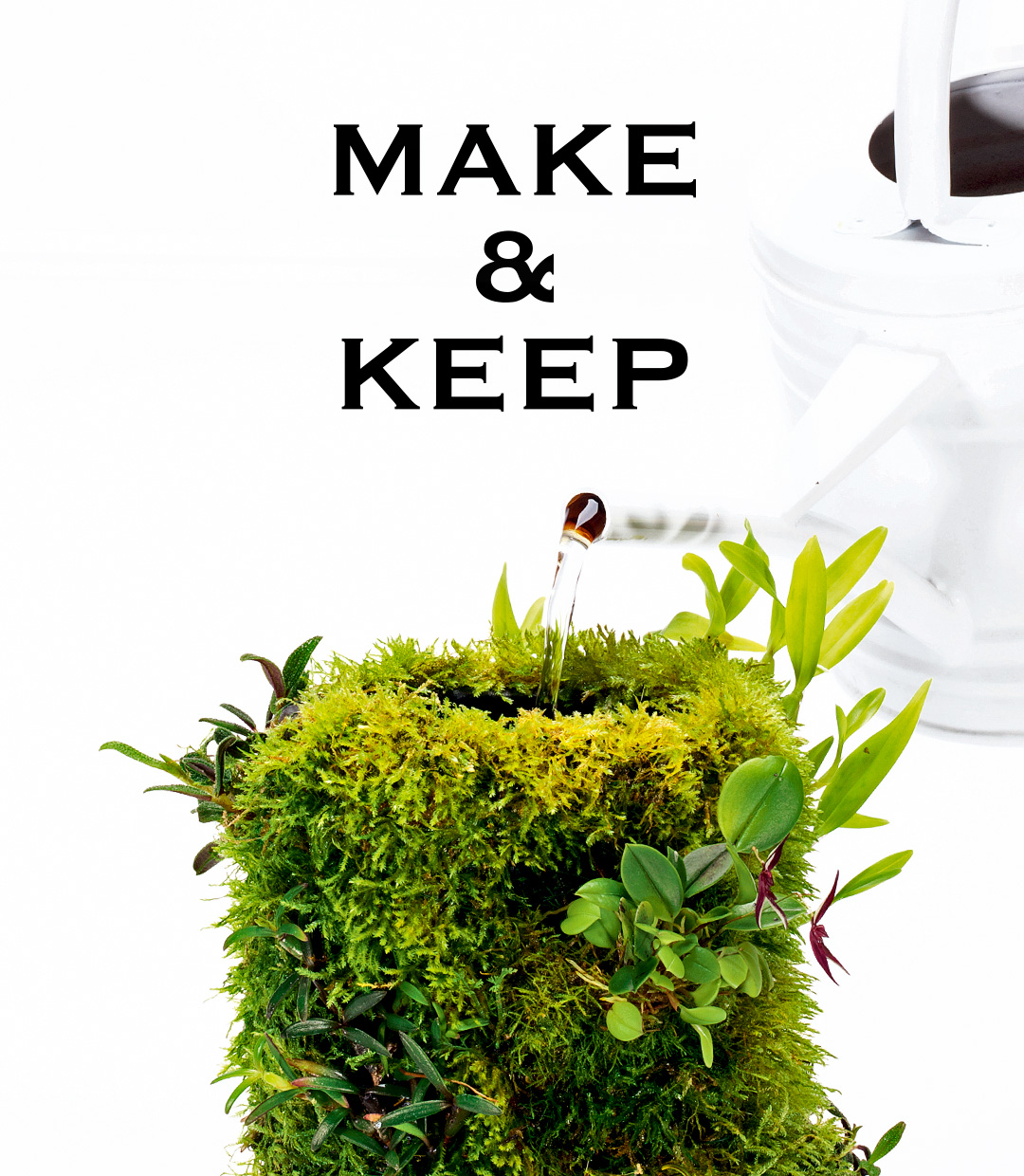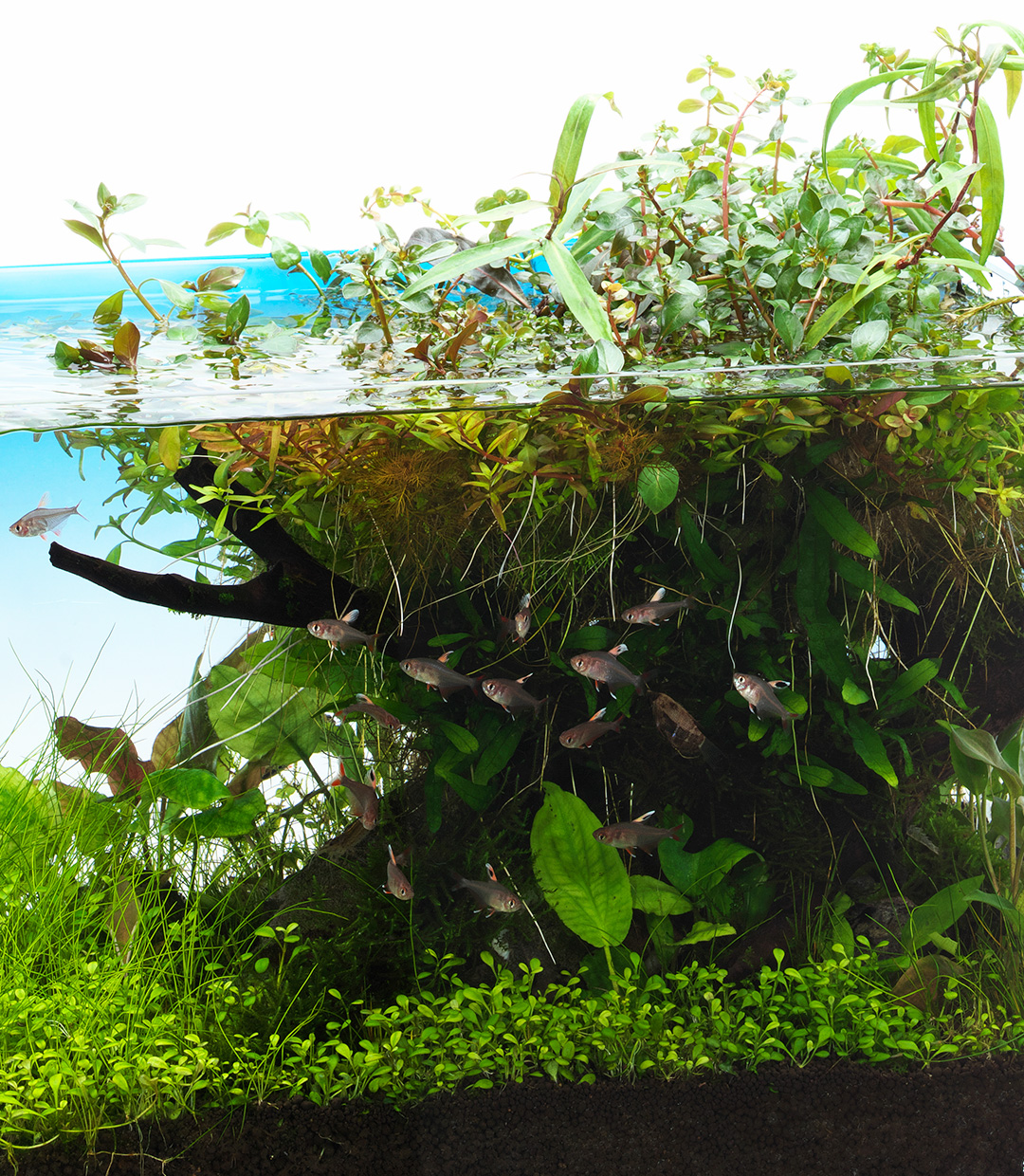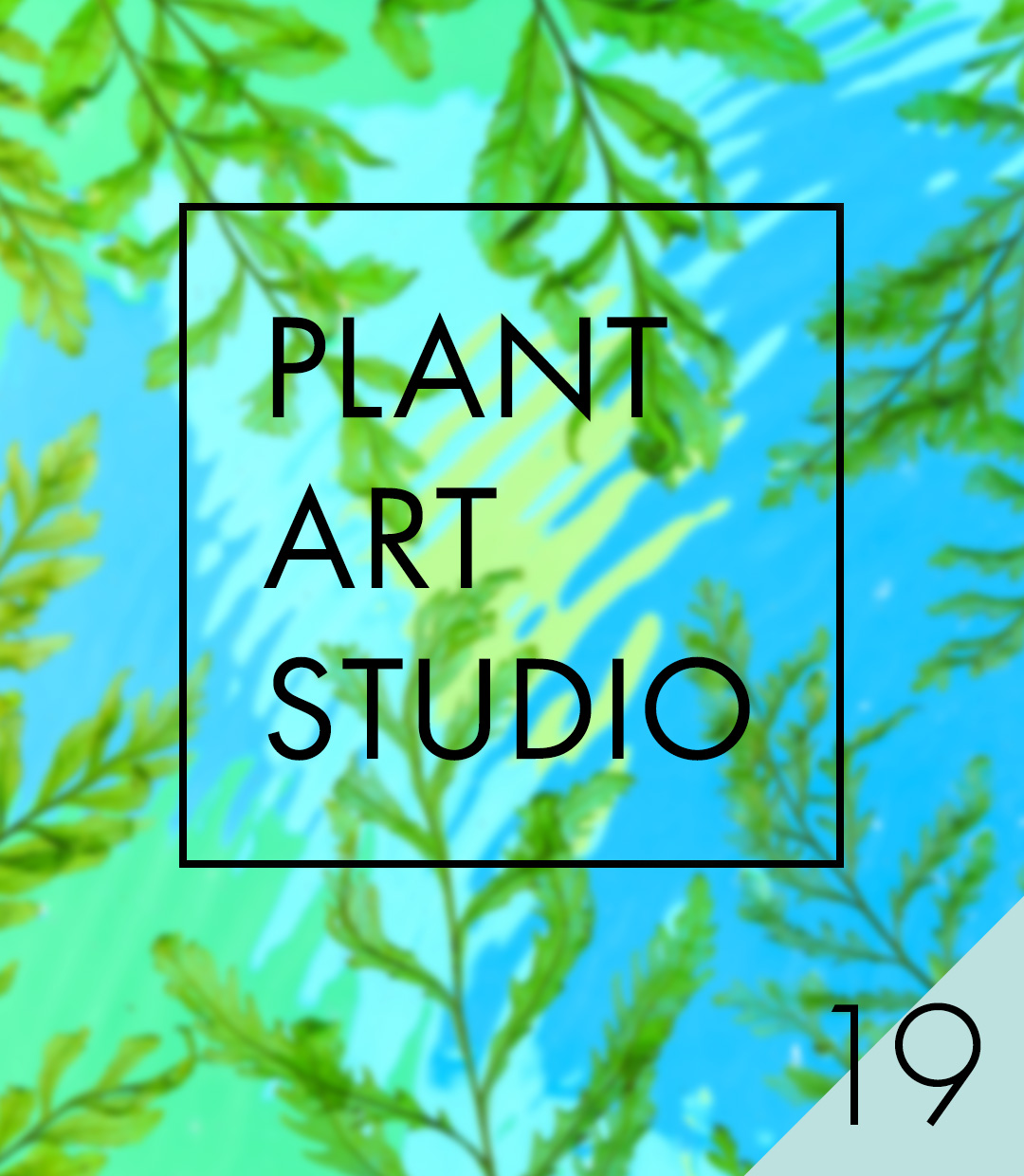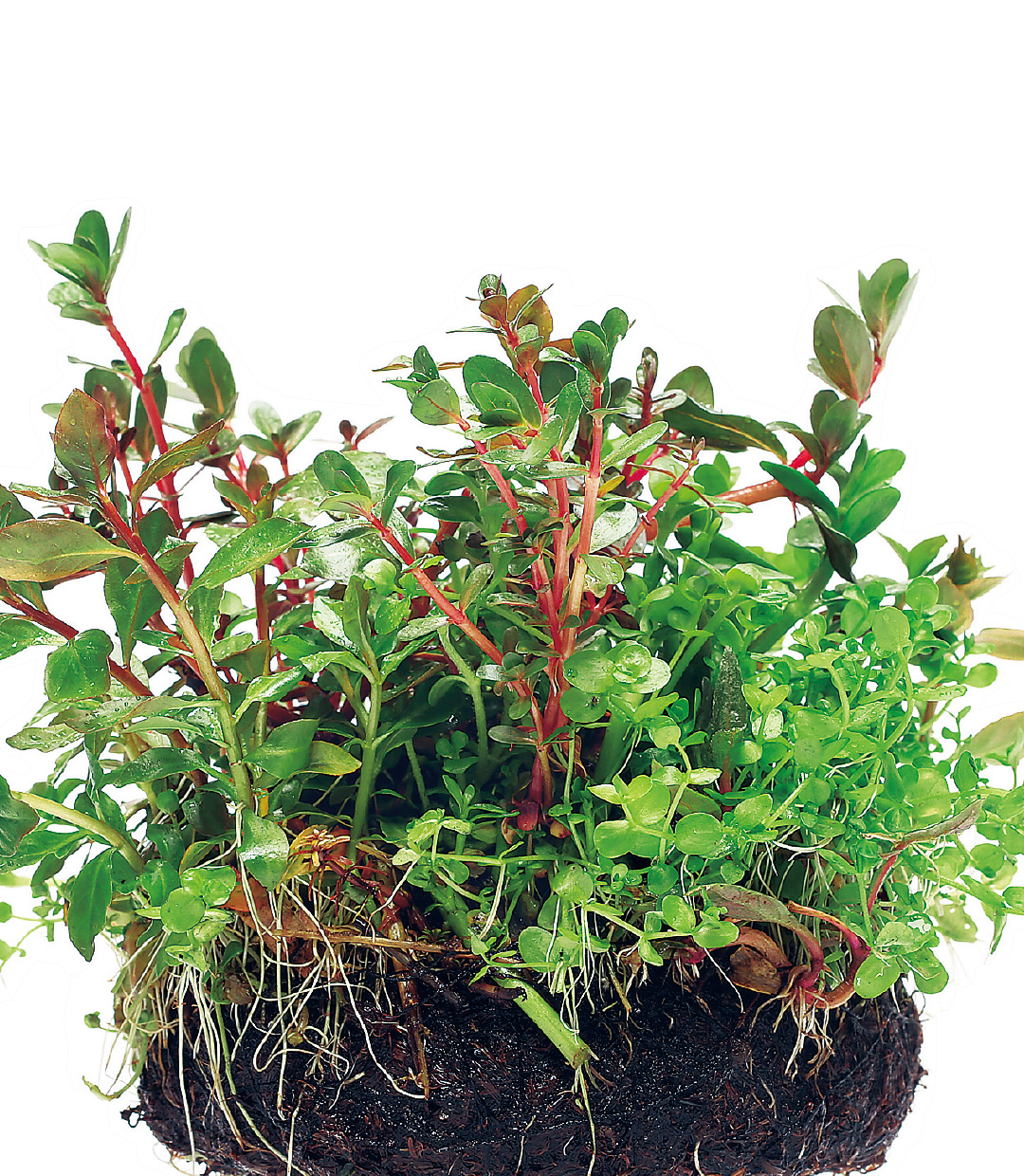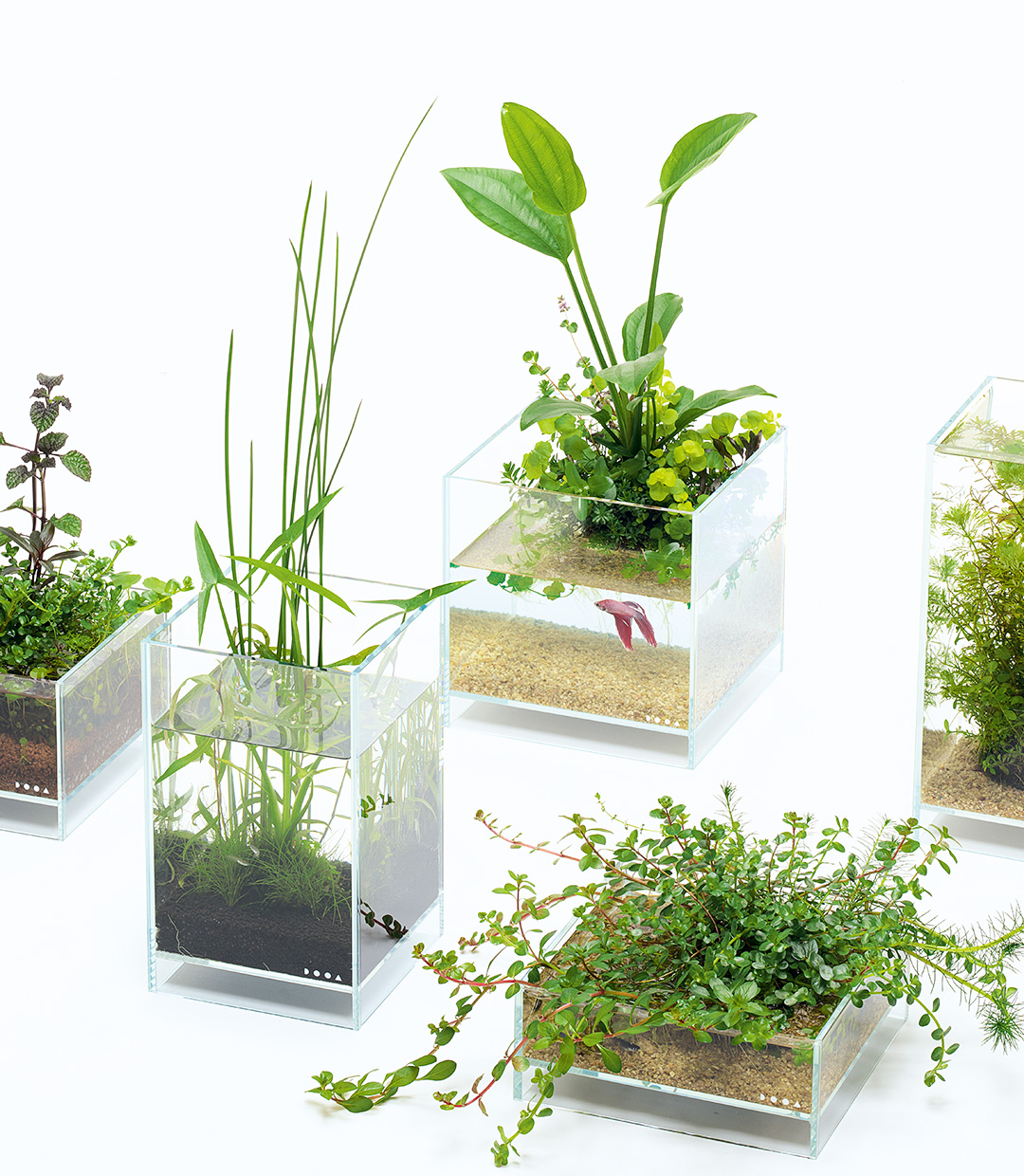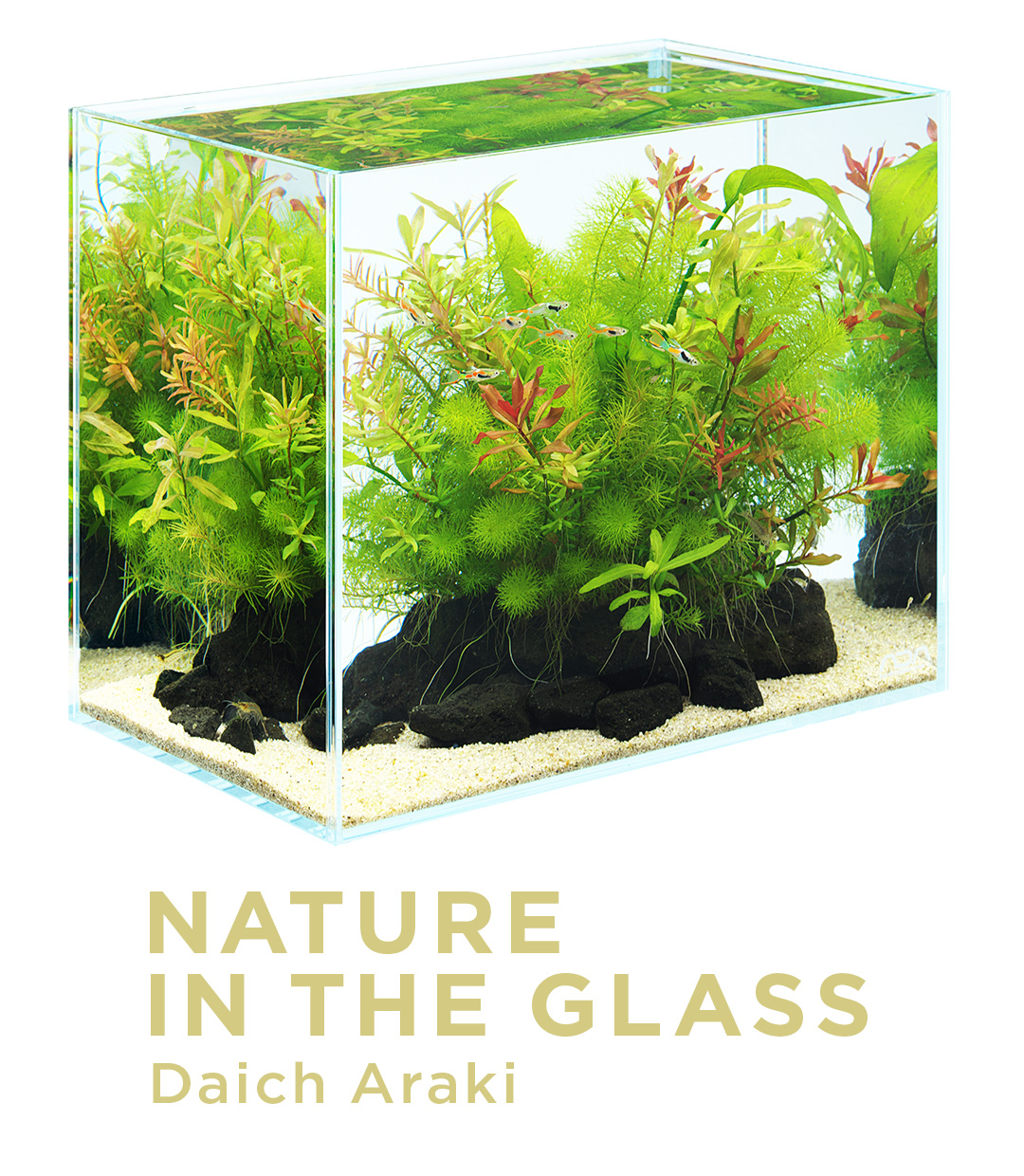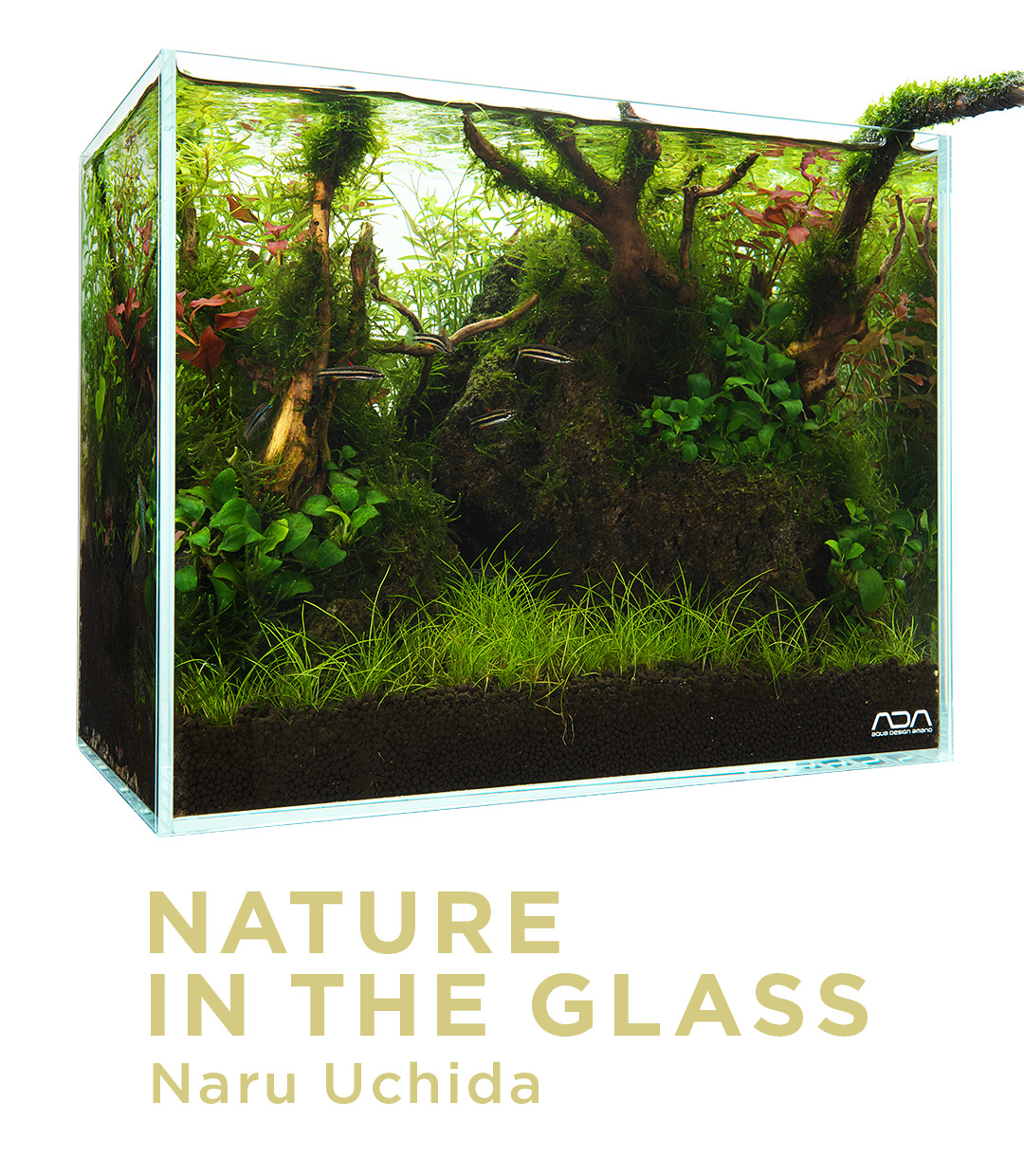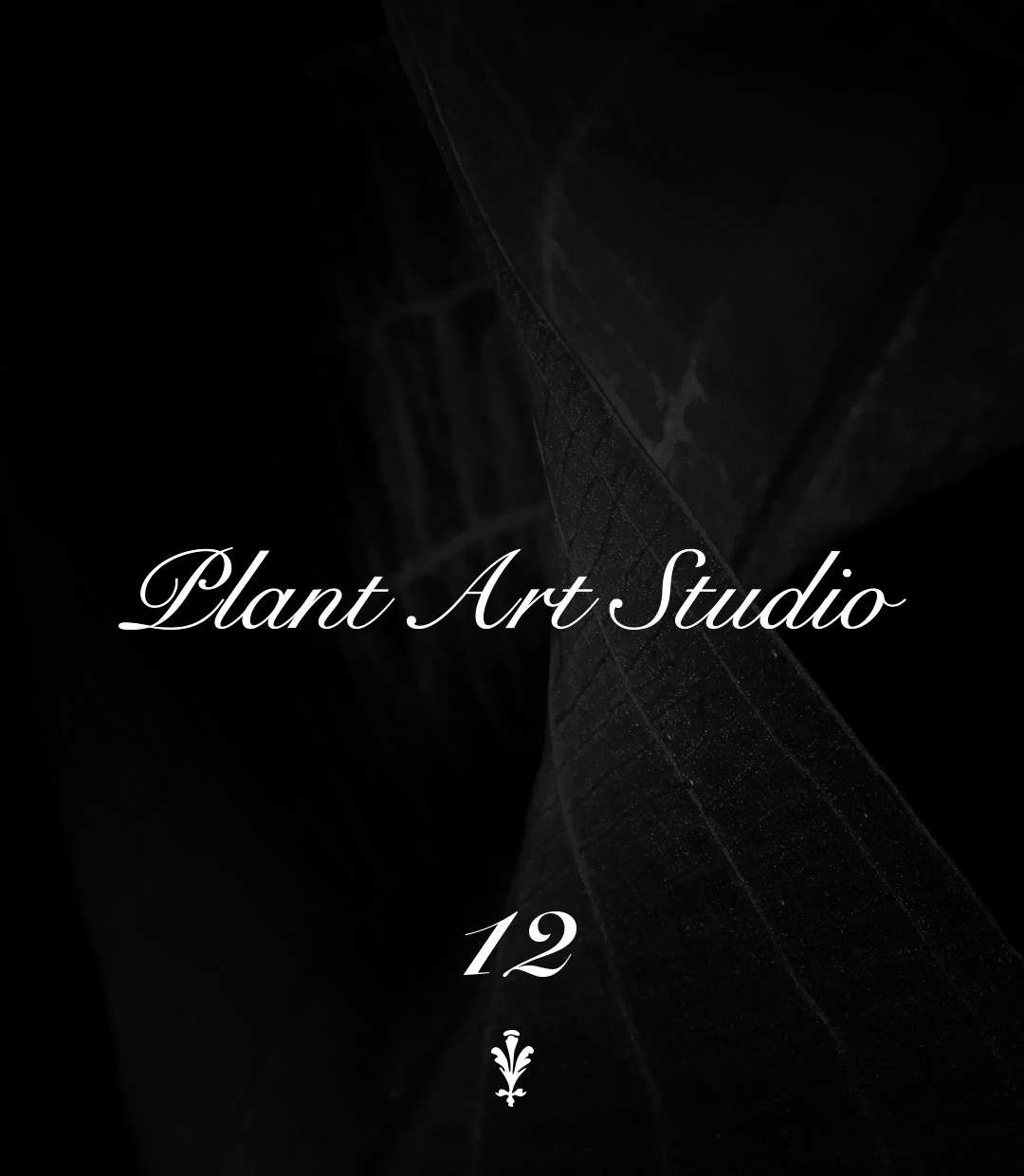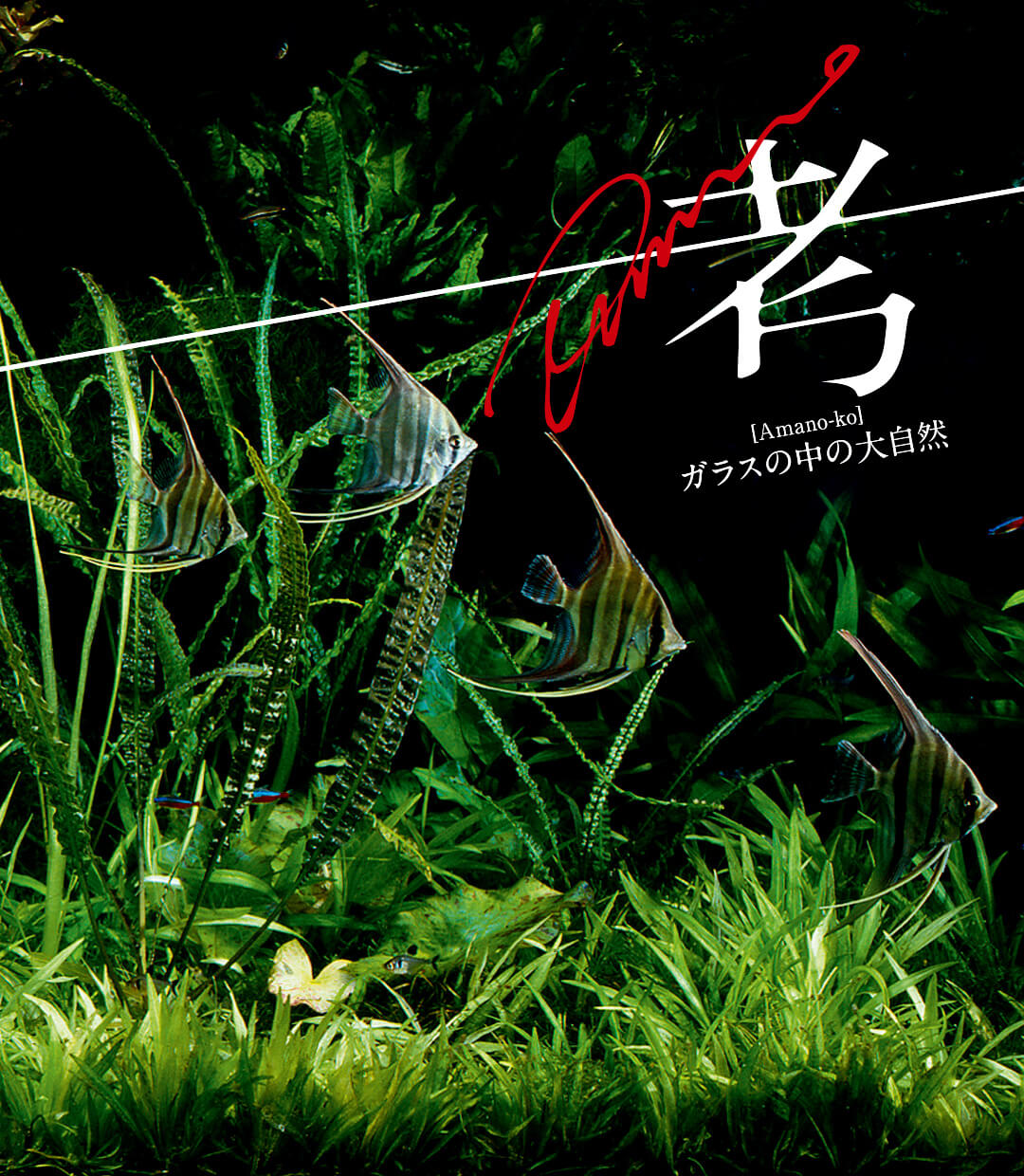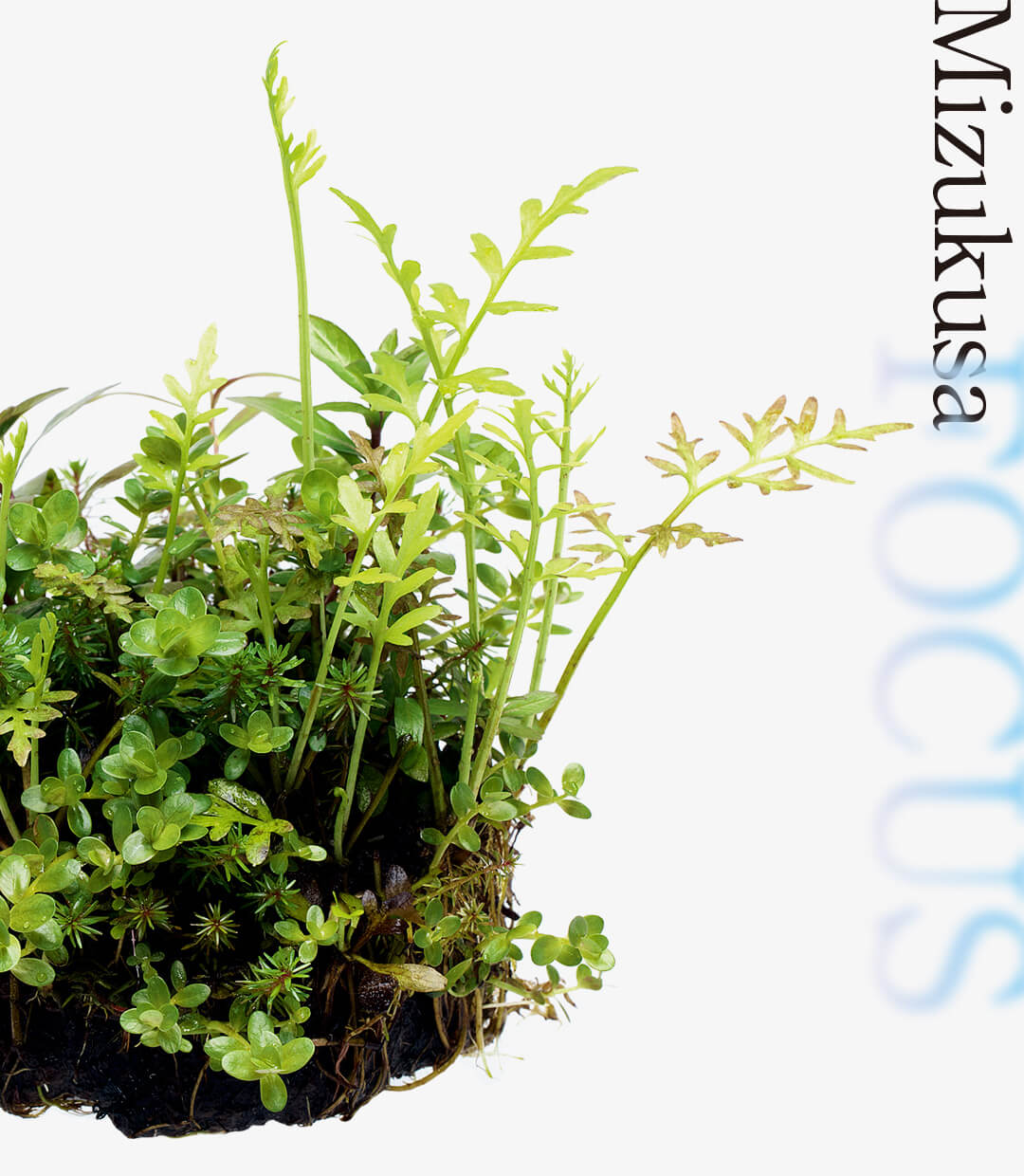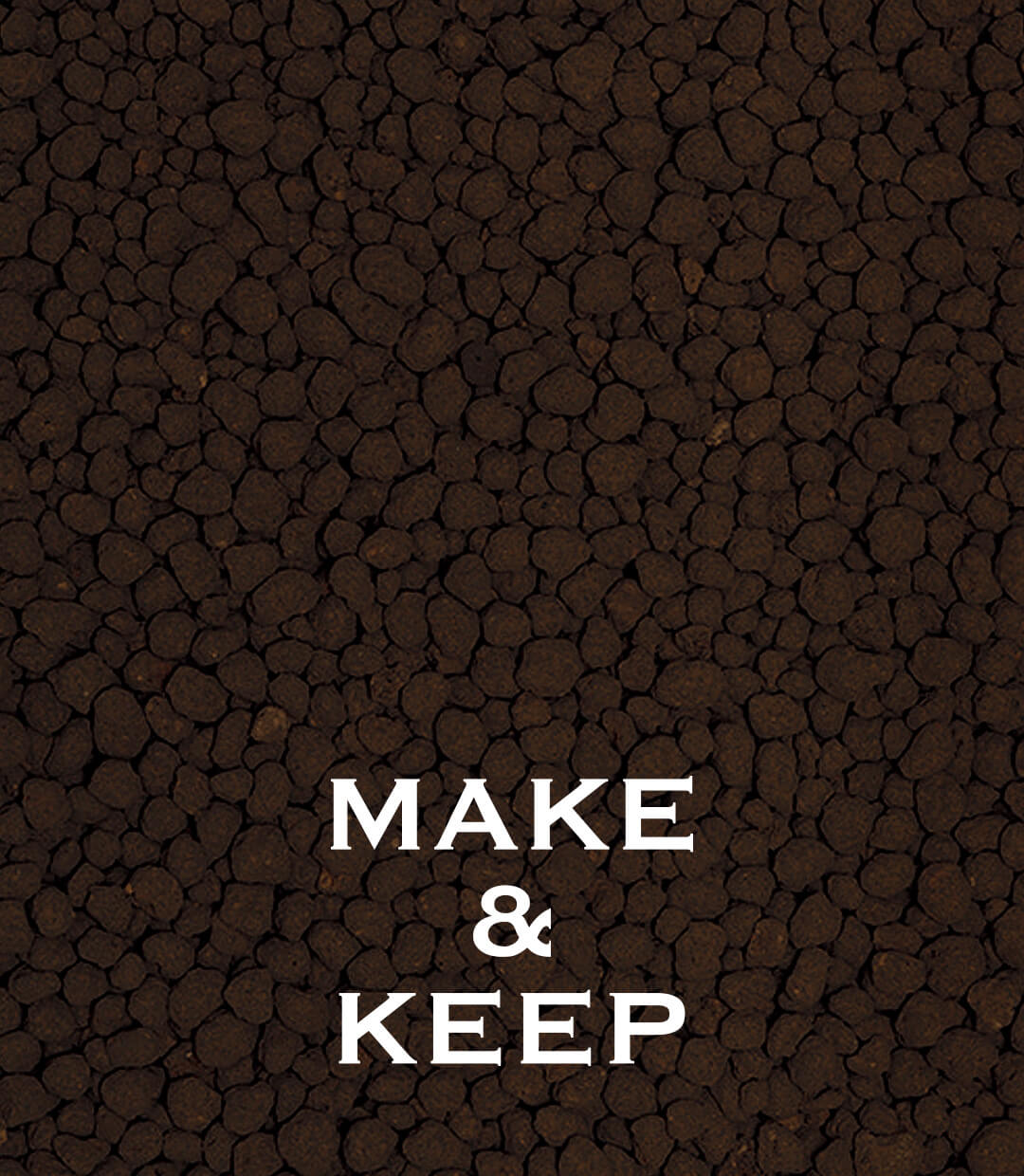NATURE IN THE GLASS ‘The Impression of Paradise’
The colors of Wabi-Kusa Stemmed Plants MIX and guppies
render the splendor of paradise.
[The Impression of Paradise]
Uncommon horizontally long Unzan Stones are used as a layout material for this aquascape. While it is easy to produce a dramatic composition with vertically long Unzan Stones, horizontally long Unzan Stones can easily create a solid and stable composition. In this layout, five Unzan Stones were arranged simply in the Golden Ratio of 3:2 by keeping a horizontal line like a mountain range in mind to make the most of the characteristics of the horizontally long stones. The key point of planting is that the background is planted only with Wabi-Kusa Stemmed Plants MIX. Wabi-Kusa, in which a variety of aquatic plants are planted together, can produce a natural appearance effortlessly. The combination of Wabi-Kusa and Unzan Stones is highly recommended since they work well together regardless of the aquarium sizes.
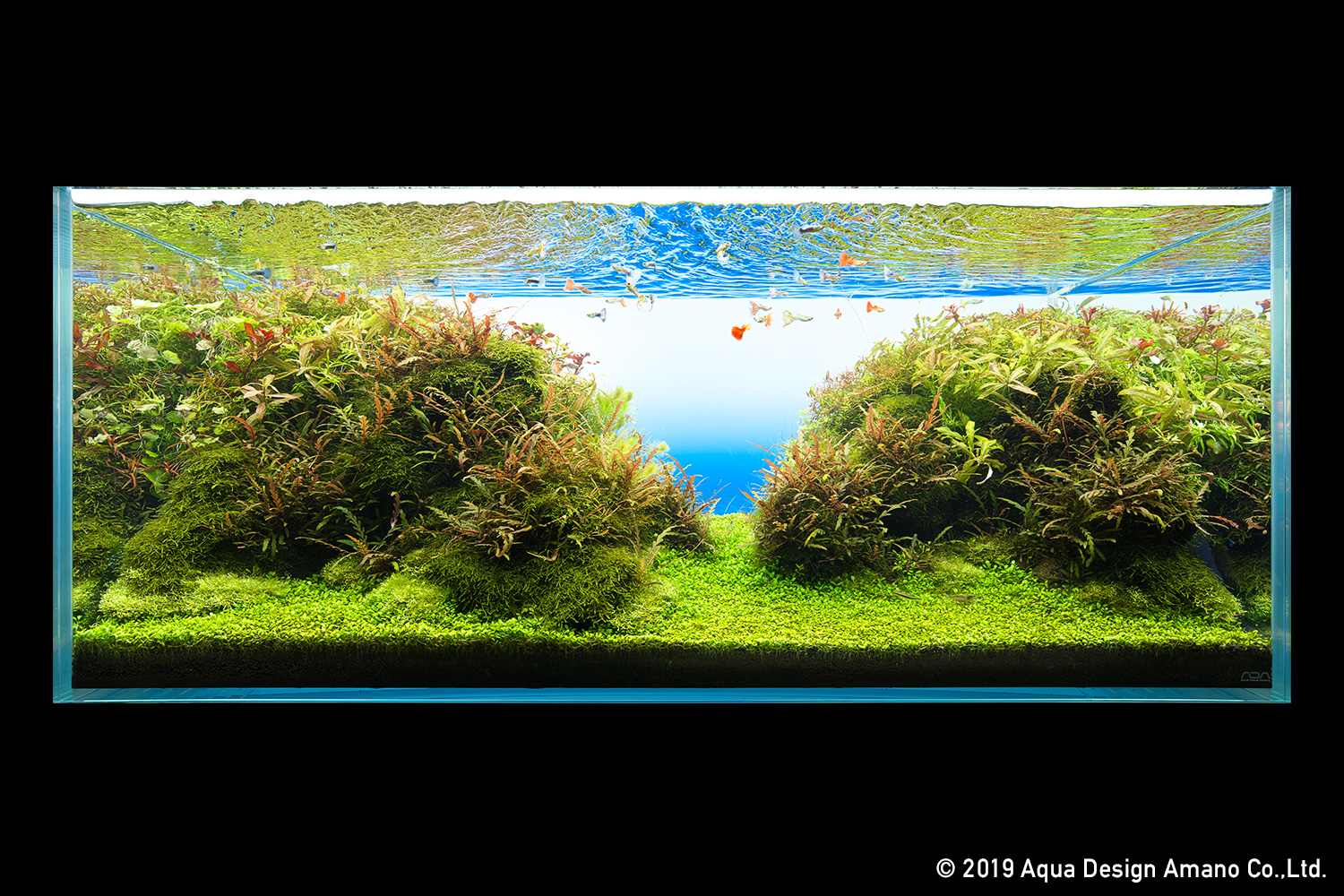
DATA
Shooting date: July 3, 2018(ADA)
Creator: Daichi Araki
Aquarium system: Cube Garden W120×D50×H50(cm)
Lighting: Solar RGB x 2, turned on for 9 hours per day
Filter: Super Jet Filter ES-1200(Bio Rio M)
Material: Unzan Stone
Substrate: Aqua Soil-Amazonia, Power Sand Advance M, Bacter 100, Clear Super, Tourmaline BC
CO2: Pollen Glass Beetle 40Ø, 5 bubbles per second via CO2 Beetle Counter (using Tower)
Aeration: 15 hours after the light is turned off using Lily Pipe P-6
Additives: Brighty K, Green Brighty Mineral, Green Brighty Nitrogen
Water change: 1/3 twice a week
Water quality: Temperature: 25ºC; pH: 6.4; TH: 20 mg/l
Aquatic Plants: Wabi-Kusa Stemmed Plants Mix / Wabi-Kusa Karen / Wabi-Kusa Hygrophila pinnatifida / Glossostigma elatinoides / Riccia fluitans / Fontinalis antipyretica
Fish & Invertebrates: Poecilia reticulata var. / Crossocheilus oblongus / Otocinclus sp. / Caridina multidentata
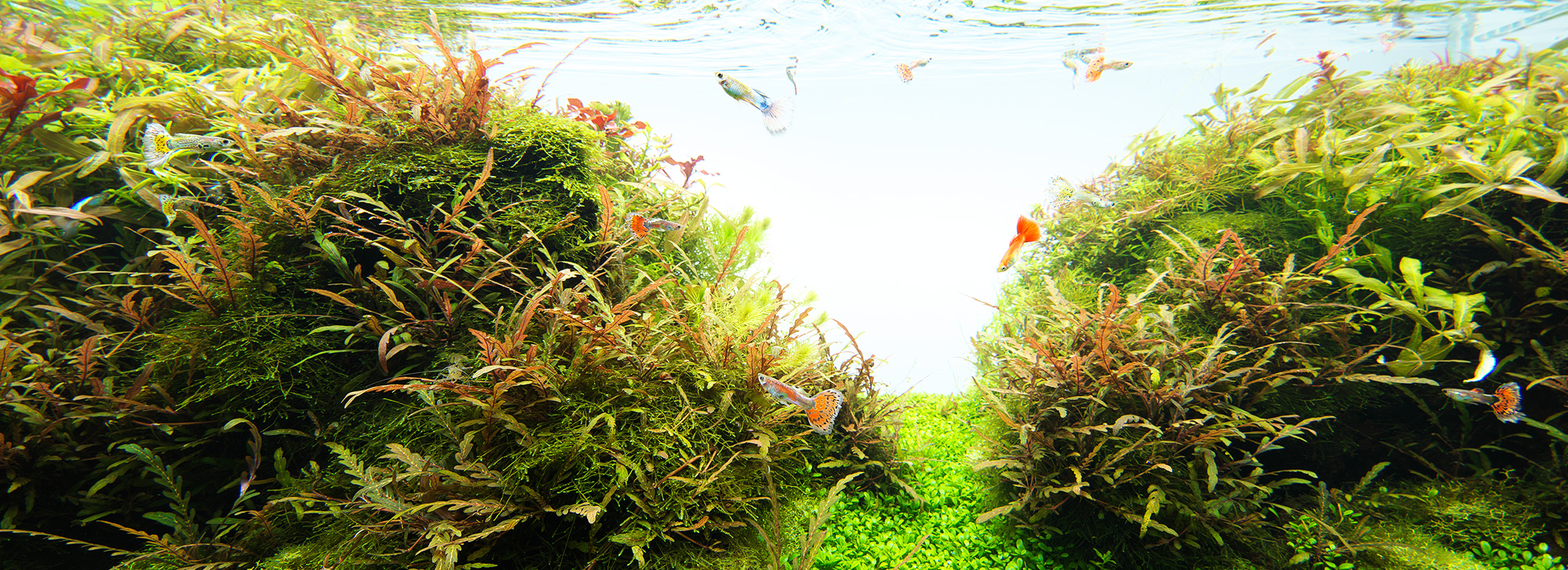
An aquascape that takes advantage of the characteristics of Wabi-Kusa
that enables you to cover a large area easily
with aquatic plants in high density.
In this issue, we are going to introduce a collection of aquascapes planted primarily with Wabi-Kusa. This first aquascape is the one produced in a relatively large W120 cm aquarium. Three types of Wabi-Kusa: Stemmed Plants MIX, Karen, and Hygrophila pinnatifida, are used here. One of Takashi Amano’s reasons behind developing Wabi-Kusa was his desire to plant aquatic plants easily in a large aquarium with large planting spaces. Two different size stem plant Wabi-Kusa, Stemmed Plants MIX (φ9) and Karen (φ6.5), are available to provide good coverage without gaps. This layout in the 120cm aquarium takes advantage of such characteristics of Wabi-Kusa.
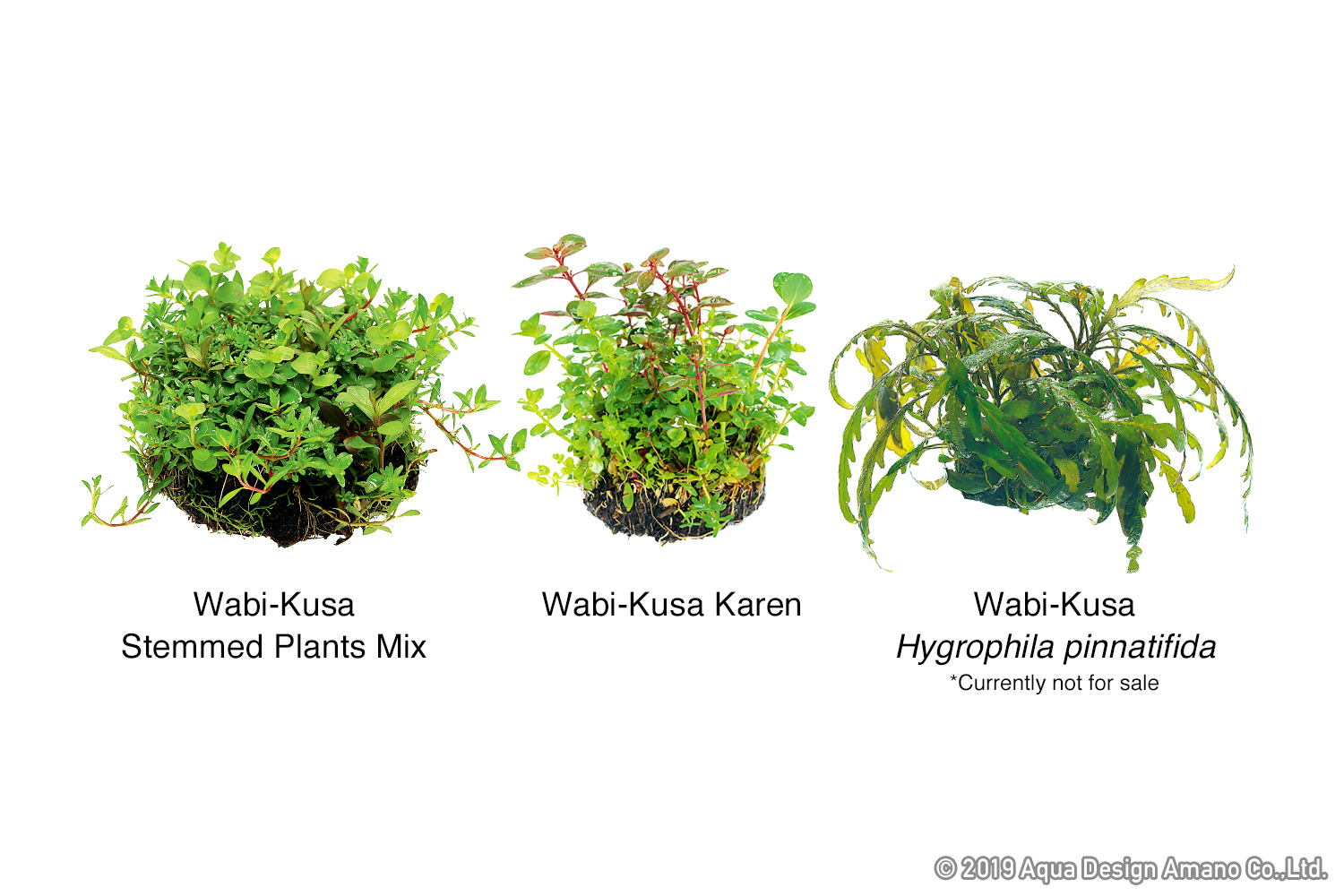
1. The effect of epiphytic plants
Hygrophila pinnatifida and Willow Moss are attached to the Unzan Stones to create a natural, cohesive appearance. The use of these plants was also intended for softening the strong presence of the stones by covering them with aquatic plants, and strengthening the presence of aquatic plants spreading from the primary Wabi-Kusa Stemmed Plants MIX.
Hygrophila pinnatifida and Willow Moss are attached to the Unzan Stones to create a natural, cohesive appearance. The use of these plants was also intended for softening the strong presence of the stones by covering them with aquatic plants, and strengthening the presence of aquatic plants spreading from the primary Wabi-Kusa Stemmed Plants MIX.
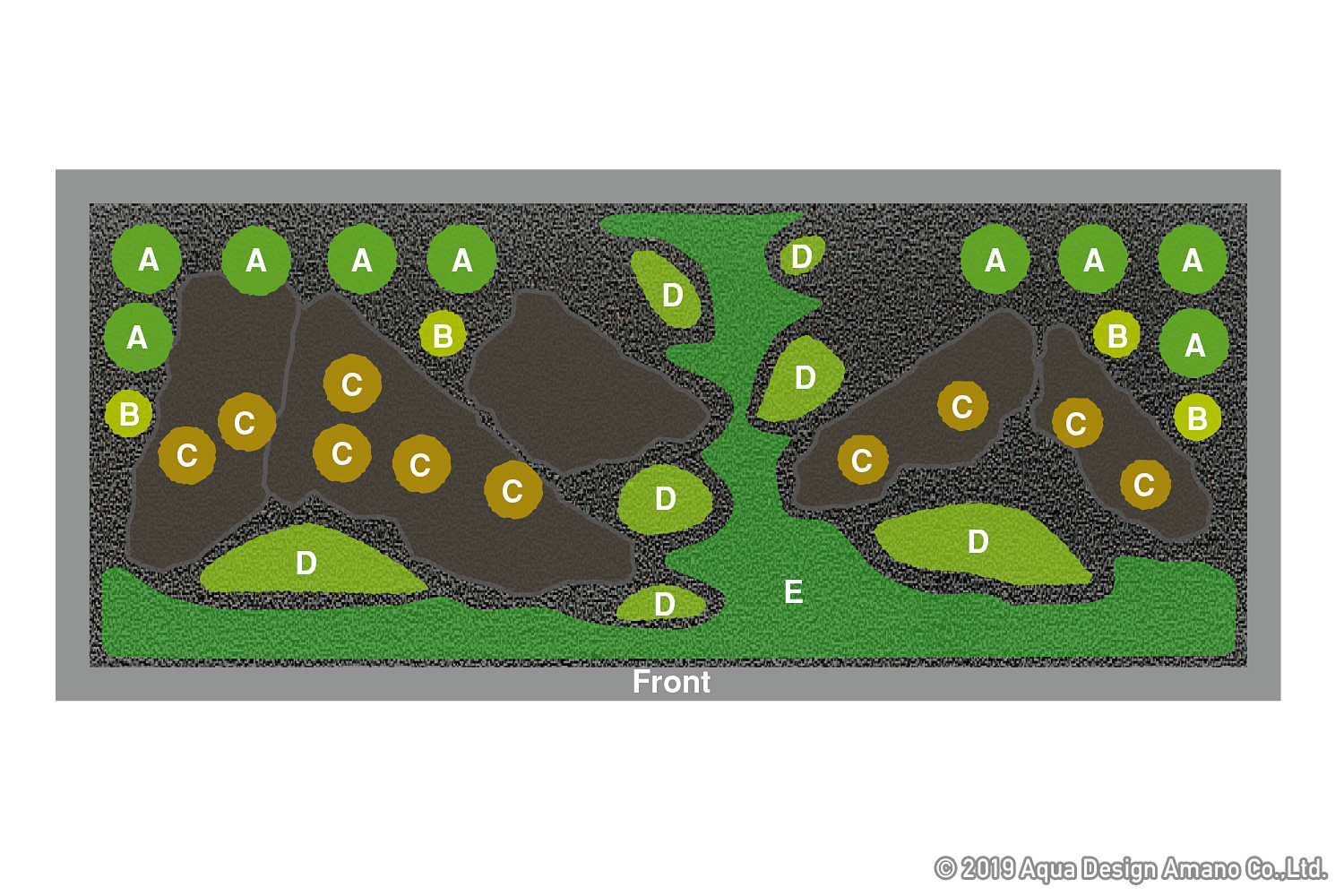
B: Wabi-Kusa Karen
C: Wabi-Kusa Hygrophila pinnatifida
D: Riccia fluitans
E: Glossostigma elatinoides
2. The Advantage of a Simple Composition
A simple and stable composition produced by arranging five Unzan Stones enables you to enjoy an aquascape for a long period of time by replacing Wabi-Kusa. Since it is easy to change the planting scheme, the appearance of an aquascape can be altered completely through Sozo Haishoku (a creative plant rearrangement method) depending on your mood.
A simple and stable composition produced by arranging five Unzan Stones enables you to enjoy an aquascape for a long period of time by replacing Wabi-Kusa. Since it is easy to change the planting scheme, the appearance of an aquascape can be altered completely through Sozo Haishoku (a creative plant rearrangement method) depending on your mood.
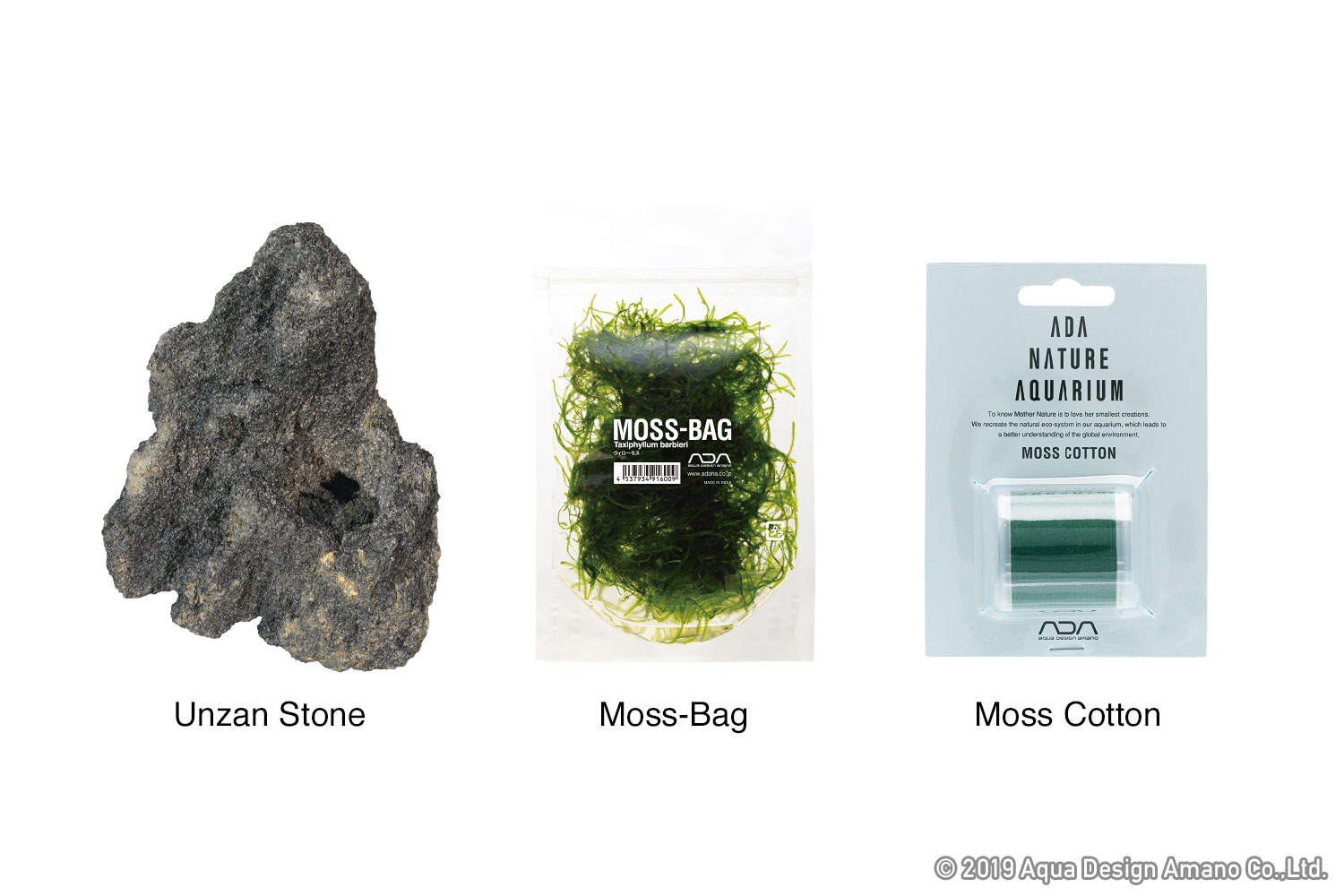
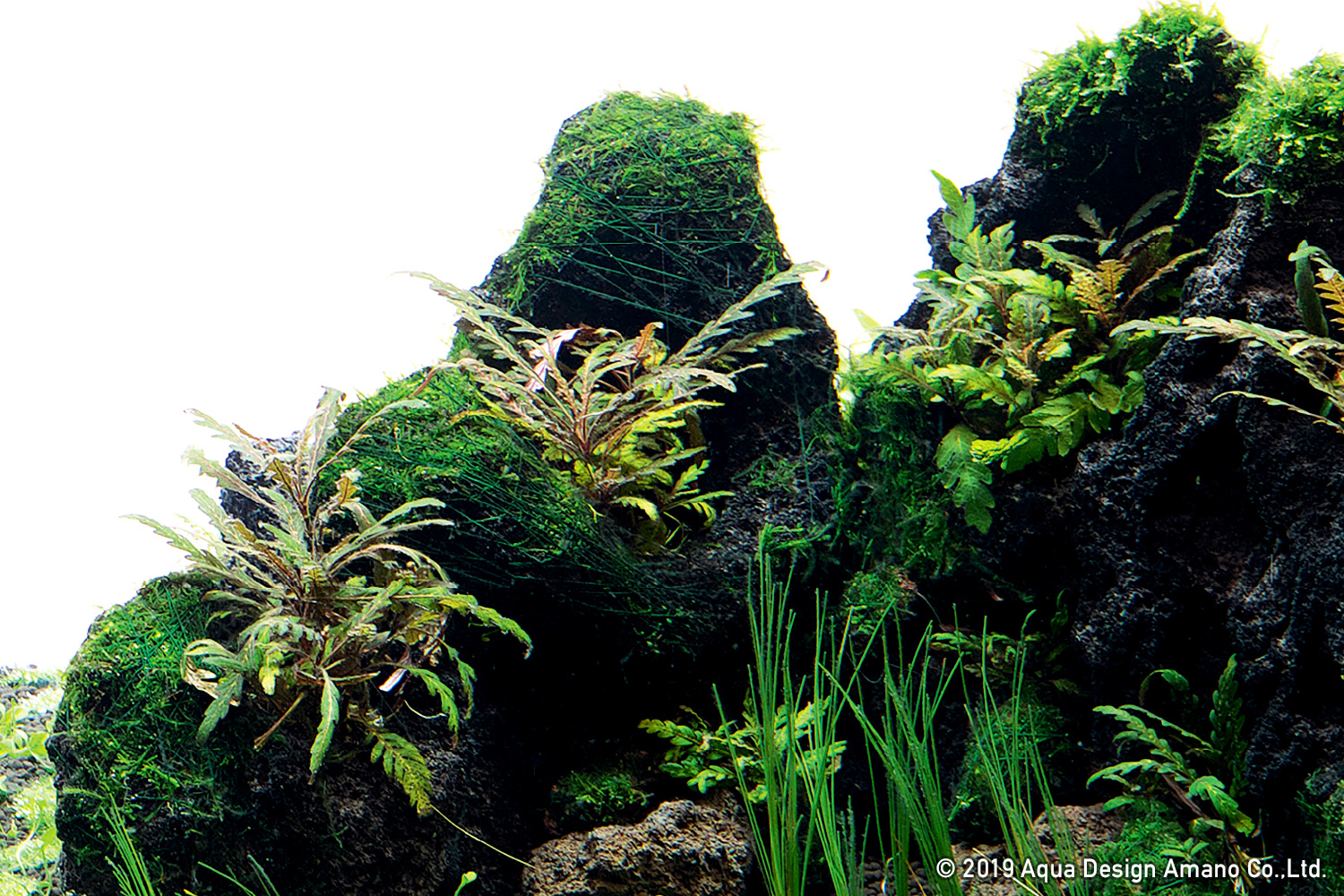
3. Simplifying planting with Wabi-Kusa
The planting in this layout was simplified by using a large number of Wabi-Kusa. Hygrophila pinnatifida grew from the Wabi-Kusa placed in the depressions of Unzan Stones. The benefit of Wabi-Kusa is that it can simplify planting and improve the appearance of a finished aquascape.
The planting in this layout was simplified by using a large number of Wabi-Kusa. Hygrophila pinnatifida grew from the Wabi-Kusa placed in the depressions of Unzan Stones. The benefit of Wabi-Kusa is that it can simplify planting and improve the appearance of a finished aquascape.
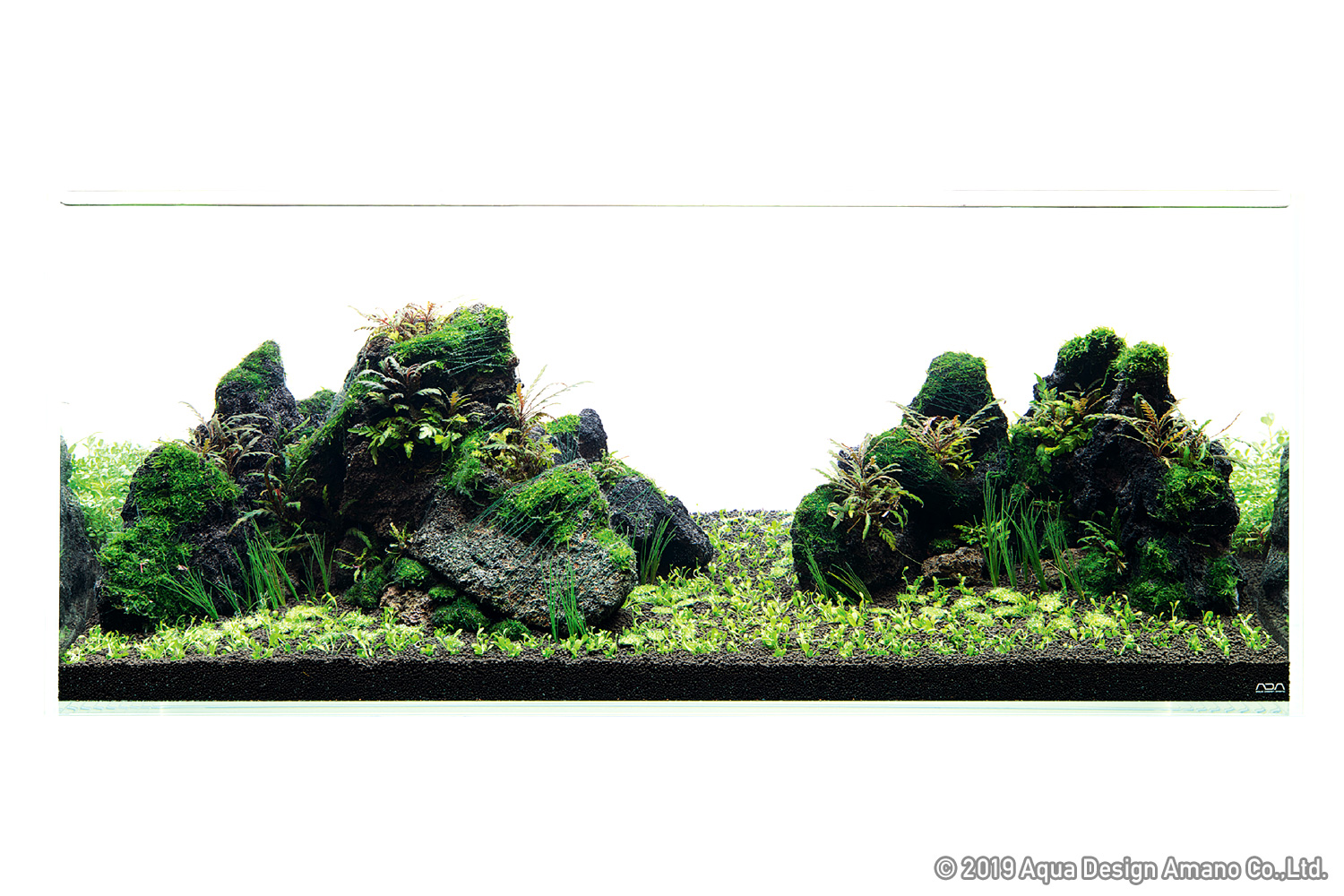
Planting
Although the Unzan Stones had a strong presence in the layout right after planting, they are covered by aquatic plants and their appearance is softened effectively by the time of photographing the finished aquascape.
Photographed on December 28, 2017
Although the Unzan Stones had a strong presence in the layout right after planting, they are covered by aquatic plants and their appearance is softened effectively by the time of photographing the finished aquascape.
Photographed on December 28, 2017
